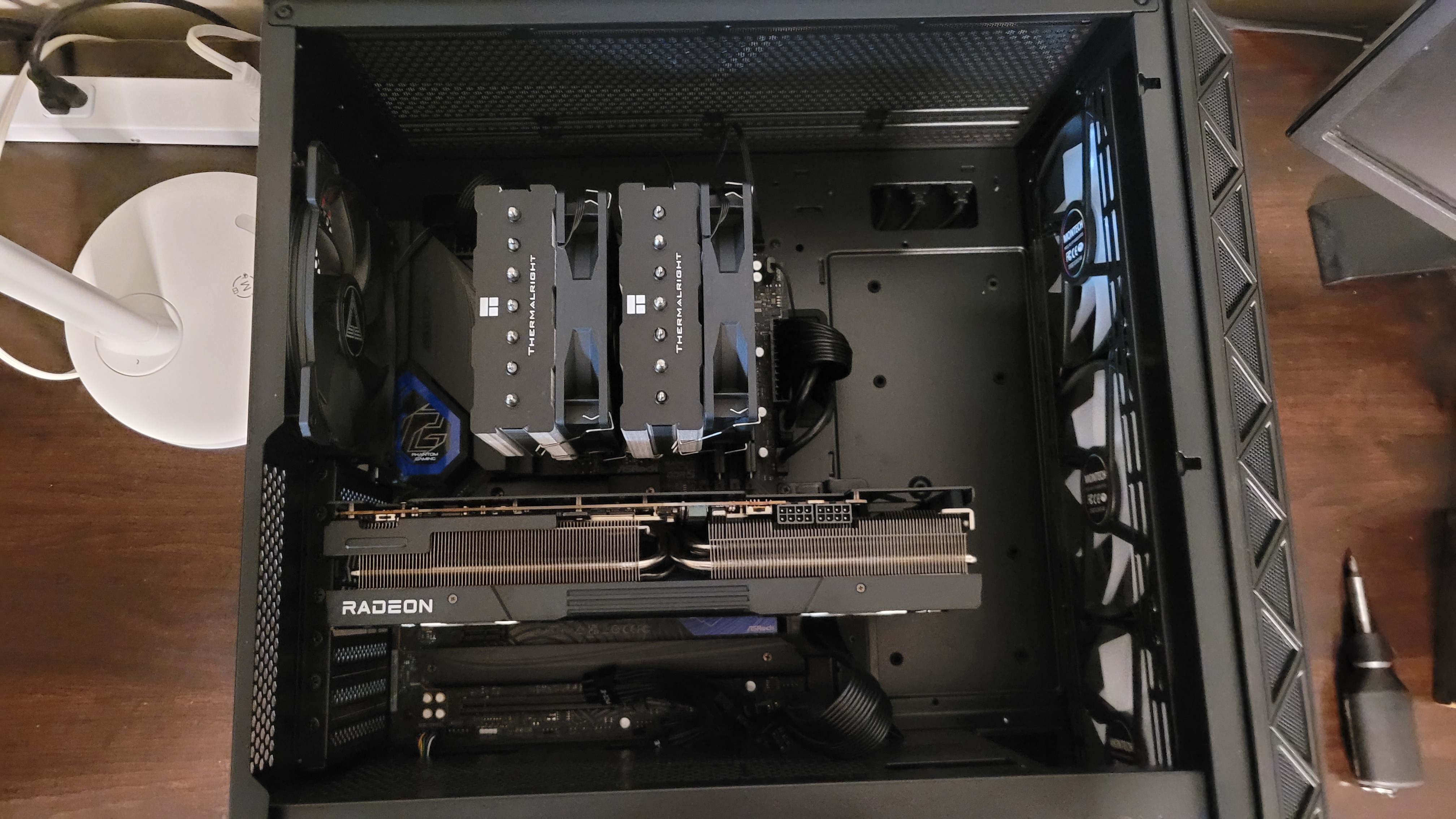
- CPU: 7800x3D (8C/16Th)
- CPU Cooler: Thermalright Phantom Spirit 120 SE
- GPU: 7900XT Powercolor Hellhound
- RAM: 32GB (2x16GB) DDR5 6000MHz CL 30
- Motherboard: Asrock B650E PG Riptide Wi-Fi
- SSD: Crucial P3 2TB
- PSU: Deepcool PQ1000M 1000w 80+ Gold fully modular ATX
- Case: Montech Air 903 Max
Specs:
Decision Making
The main goals of this build were to have good Linux support, room for upgradeability, the ability to
handle gaming and streaming simultaneously, some light video editing, and enough power to do some testing with
multiple VMs simultaneously.
With Linux support being one of the main focuses the GPU was decidedly AMD to be able to use default
mesa drivers and not deal with the lack of support for open source Nvidia drivers and the somewhat buggy
proprietary drivers (this was before Nvidia hired one of the maintainers for the open source GPU drivers and
when there were still plenty of Wayland integration issues).
At the same time Intel was having overvoltage issues with their 13th and 14th gen processors while still
losing to AMD in gaming performance so an easy decision to go with AMD. On top of Intel having issues the x3d
CPUs AMD were making have been showing that the increased L3 cache could bring out considerably better frame rates
for fast paced CPU bound games like most E-Sports titles.
Upgradability
With the platform decided by the CPU being AMD the two remaining options were AM4 or AM5. AM4 being the older
socket type running ddr4 RAM and soon to become EOL. This left AM5 as the clear winner being the new socket type
with the assumption of 3 or more generations of CPUs to potentially upgrade to in the future and supporting the newer
ddr5.
So on to looking for a motherboard with an AM5 socket with room for expandability/upgradability. Looking for at least
2 m.2 slots (full x4 lanes at least gen 4), 4 RAM slots, 2 PCIe slots (at least 1 x16 slot with full 16 lanes at gen 5),
2.5Gb NIC, and Wi-Fi 6e (not required to be included but to have the option of a Wi-Fi card). Since PCIe gen 5 was one of the
requirements for a full x16 slot the only chipsets that met that requirement were the B650E and the X670E chipsets. Eventually I
landed on the board that I did because it met all of the earlier requirement or exceded them. 3 m.2 slots, 2 x16 (1 at gen 5 1 at gen 4)
slots (1 x16 lanes or 2 x8), 1 x1 slot, 1 pre populated m.2 Wi-Fi slot with a Wi-Fi 6e card, 2.5Gb Ethernet, etc.
Downsides and Lessons Learned
Some of the major problems with upgradability and expandability options is price and space constraints. The more features and
options you want the more expensive the end result will be and depending on the options for upgrades the more space it will take up.
Especially when you want multiple PCIe slots you need more space for the amount of cards you want to put in a system and each of those
cards have power requirements and thermal limits that require adequate cooling or a power supply that can support them as well as a large
enough case to house all of the internal components.
There are several things I would have done differently in this build if I were to do it again. Among those are a different case with better
port availability especially more USB A ports than just 2. I would have swapped the motherboard for either an X670E that was about the same price
+-$10 or changed the build entirely to an ITX form factor.